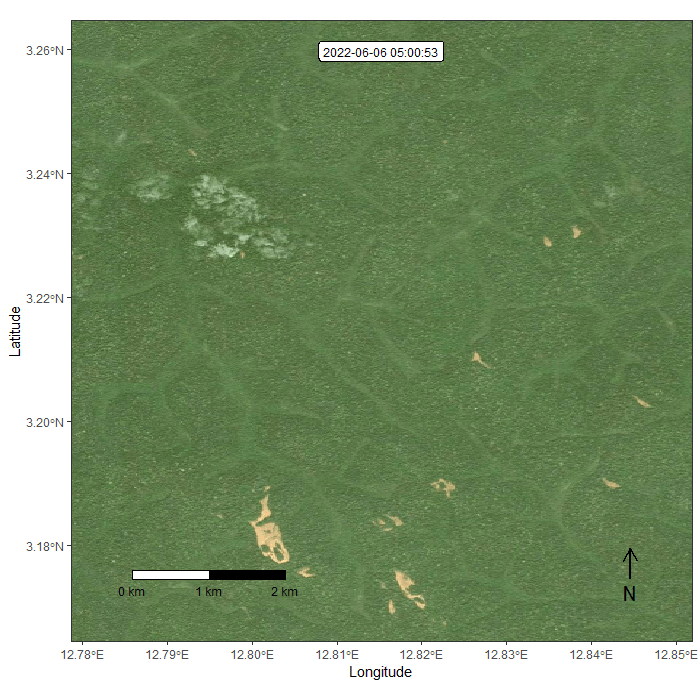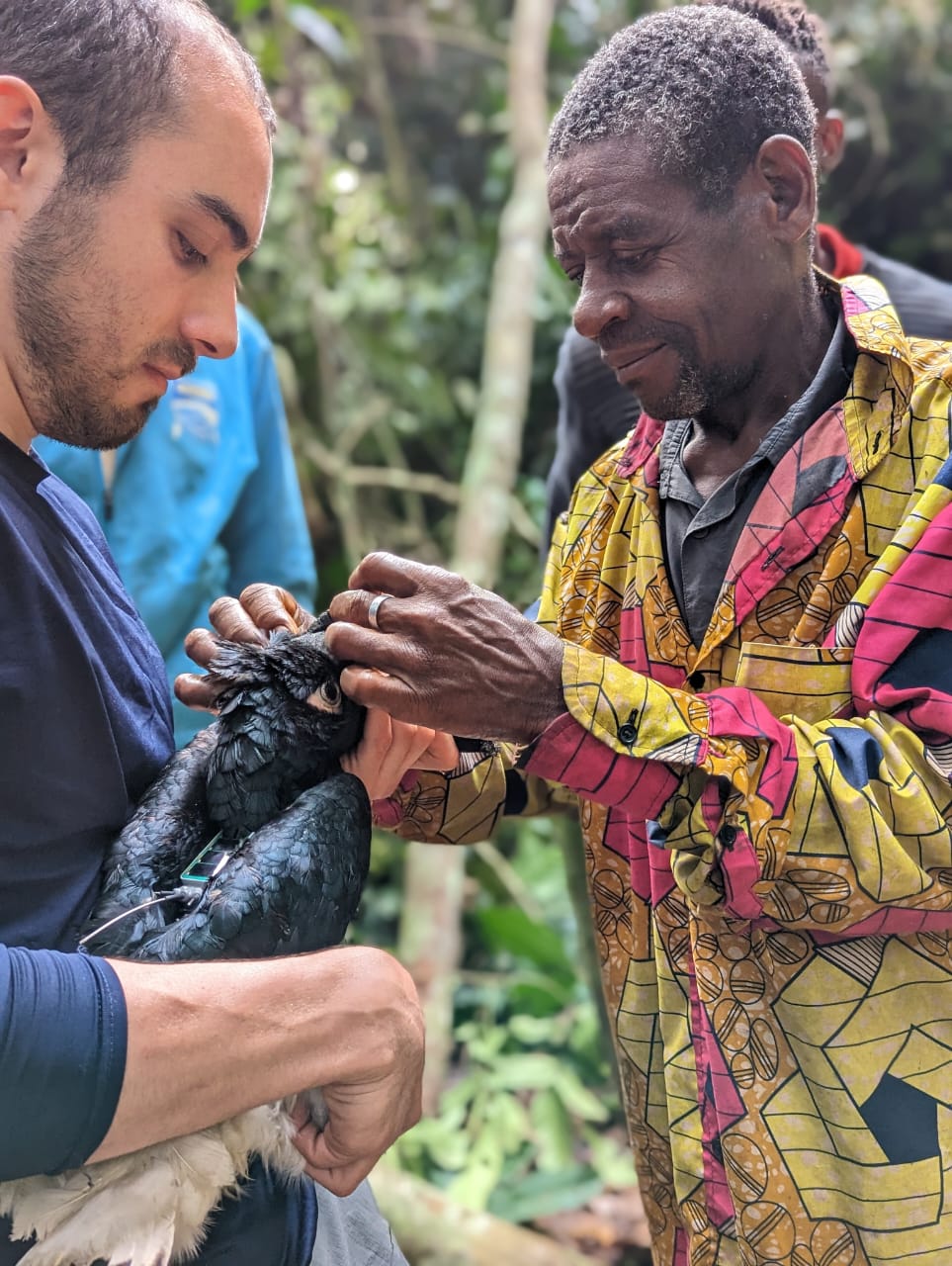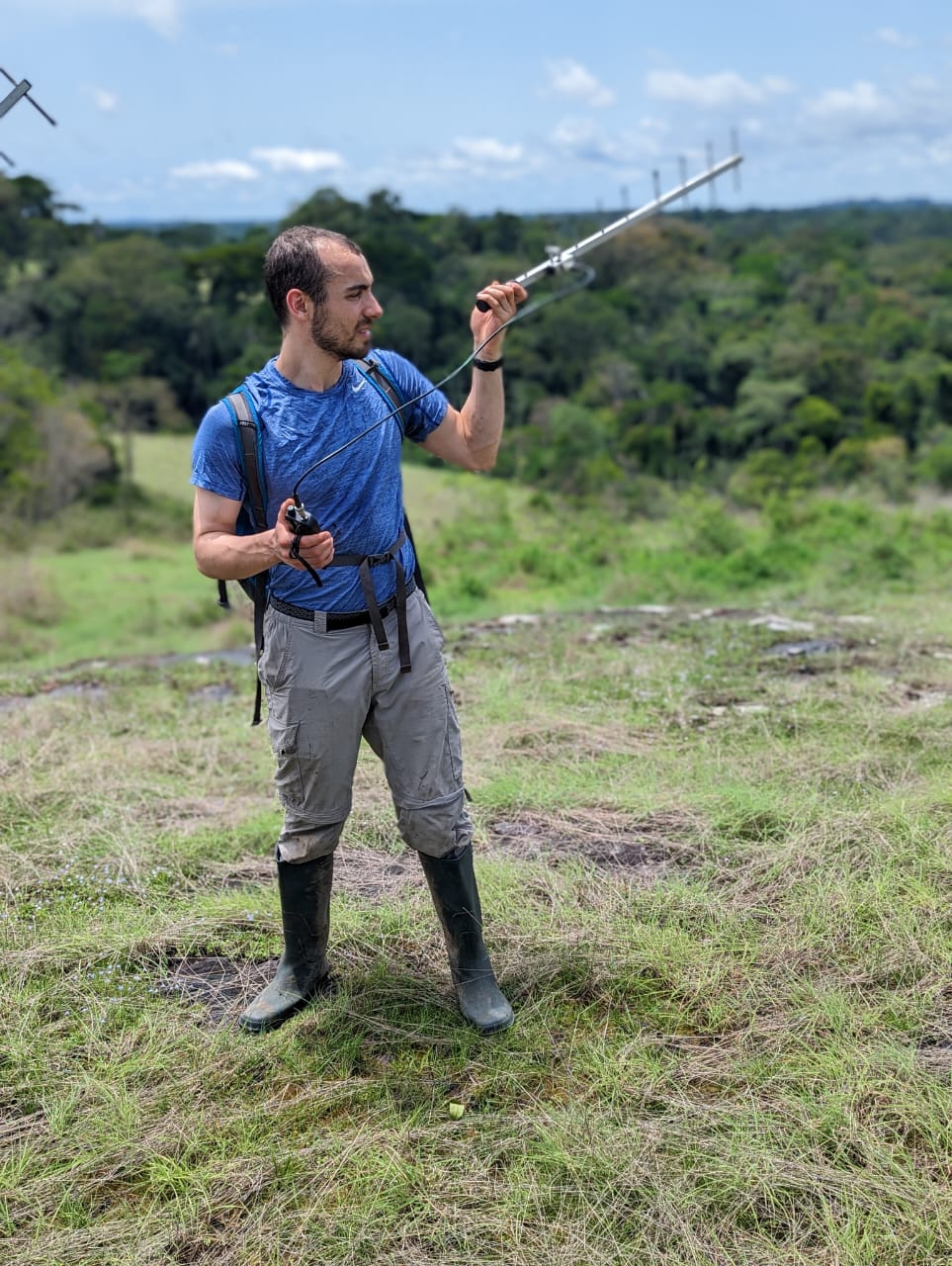Research
Consequences of animal movements for ecological processes
 Animals can exert outsized impacts on ecosystem stability by moving among habitat patches and modifying their environment. My research addresses the consequences of animal movement for dispersal of both vascular and nonvascular plants, as well as an invasive insect, the hemlock woolly adelgid. I am particularly interested in how species–and individuals of the same species–vary in movement behavior and how this “movement diversity” can be a form of biodiversity in itself. Ongoing research addresses the diversity of behavioral traits hiding in animal movement data, how they relate to animal ecological roles, and how they are threatened by agents of global change.
Animals can exert outsized impacts on ecosystem stability by moving among habitat patches and modifying their environment. My research addresses the consequences of animal movement for dispersal of both vascular and nonvascular plants, as well as an invasive insect, the hemlock woolly adelgid. I am particularly interested in how species–and individuals of the same species–vary in movement behavior and how this “movement diversity” can be a form of biodiversity in itself. Ongoing research addresses the diversity of behavioral traits hiding in animal movement data, how they relate to animal ecological roles, and how they are threatened by agents of global change.
Relevant publications:
Russo, N.J., K. Gahm, M. Zuercher, K. Hernandez, R.V. Blakey, C. Niesner, and E. Abelson. 2025. Monitoring animal movement diversity as a component of biodiversity. EcoEvoRxiv [link]
Russo, N.J., D.L. Nshom, A. Ferraz, N. Barbier, M. Wikelski, M.J. Noonan, E.M. Ordway, S. Saatchi, and T.B. Smith. 2024. Three-dimensional vegetation structure drives patterns of seed dispersal by African hornbills. 2024. Journal of Animal Ecology. DOI: 10.1111/1365-2656.14202. [link]
Russo, N.J., M.W. Robertson, R. MacKenzie, B. Goffinet, and J. Jiménez. 2020. Evidence of targeted consumption of mosses by birds in sub-Antarctic South America. Austral Ecology 45: 399-403. [link]
Russo, N.J., C.S. Elphick, N.P. Havill, and M.W. Tingley. 2019. Spring bird migration as a dispersal mechanism for the hemlock woolly adelgid. Biological Invasions 5: 1585-1599. [link] [press]
Interactions between animals and vegetation structure
 Animal behaviors shape and are shaped by their environment. In tropical forest ecosystems with high 3D structural diversity, animals on the ground, in the canopy, and in between decide where to move based in part on how 3D vegetation structure indicates the locations of resources and risks. In turn, animals influence vegetation structure through seed dispersal, herbivory, and other ecological roles. I use Light detection and ranging (LiDAR) to measure 3D vegetation structure and characterize its relationships to animal ecological roles in central African rainforests. I am currently exploring how 3D vegetation structure can be influenced by seed dispersers and herbivores such as birds, bats, monkeys, and elephants. Establishing causality in animal-landscape interactions is critical for understanding how ecosystems function and for predicting their response to global climate and land use change.
Animal behaviors shape and are shaped by their environment. In tropical forest ecosystems with high 3D structural diversity, animals on the ground, in the canopy, and in between decide where to move based in part on how 3D vegetation structure indicates the locations of resources and risks. In turn, animals influence vegetation structure through seed dispersal, herbivory, and other ecological roles. I use Light detection and ranging (LiDAR) to measure 3D vegetation structure and characterize its relationships to animal ecological roles in central African rainforests. I am currently exploring how 3D vegetation structure can be influenced by seed dispersers and herbivores such as birds, bats, monkeys, and elephants. Establishing causality in animal-landscape interactions is critical for understanding how ecosystems function and for predicting their response to global climate and land use change.
Relevant publications:
Russo, N.J., J.M. Takuo, V. Tegebong, M. LeBreton, M. Dean, A. Ferraz, N. Barbier, M. Wikelski, E. M. Ordway, S. Saatchi, and T.B. Smith. 2025. Spaceborne and UAV-LiDAR reveal hammer-headed bat preference for intermediate canopy height and diverse structure in a central African rainforest. Movement Ecology 13:30. [link]
Russo, N.J., A.B. Davies, R.V. Blakey, E.M. Ordway, and T.B. Smith. 2023. Feedback loops between 3D vegetation structure and ecological functions of animals. Ecology Letters 26:1597–1613. DOI: 10.1111/ele.14272 [link]
Ecology and conservation of African ecosystems
Ecology research is motivated in large part by its applications to practical problems involving humans and wildlife. Much of my past and current research addresses conservation issues in Africa’s Congo Basin, including the effects of human activities on the nomadic movements of hornbills, their regional population declines, and their susceptibility to international trade. Community engagement is central to this work, including building relationships with Baka and Badwe’e forest guides whose knowledge of Congo Basin rainforests is critical for long-term protection, and mentoring students who will become conservation leaders in their country.

Relevant publications:
Dehaudt, B., R. Bose, J.J. Avoto, S. Brittain, T. Bruce, E.K. Chen, F.A. Forzi, B.D. Hardesty, K.M. Holbrook, A.M. Lamperti, V.T. Parker, J.R. Poulsen, N.J. Russo, E. Simpoh, B.C. Wang, K.D. Whitney, T.B. Smith, and M.S. Luskin. 2025. Thirty years of arboreal wildlife trends in an African rainforest reveal the protective role of researchers’ presence and its limitations. Biological Conservation 312:111475. [link]
Tinsman, J., A. Woodward, S. Su, D.H. Skinner, L.V. Kemp, A.D. Abeh, K.M. Afiadenmanyo, N. Arcilla, K. Brouwer, A.S Chaffra, F. Forzi, F. Guetse, L.H. Holbech, D. Ikome, A.M. Koutchoro, S.G.K. Odoukpe, R. Orenstein, D. Nshom, N.J. Russo, T.B. Smith, R.S. Terrill, P.W. Trail, and J.A.O. Terrill. 2025. Intense international exploitation of African hornbills necessitates urgent conservation measures, including CITES listing. Biological Conservation 308:111105. [link] [press] [press]
